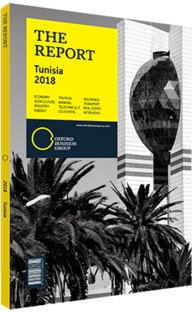Investment in Tunisia's port infrastructure boosting regional competitiveness
A developed port infrastructure has been critical in allowing Tunisia to create a place for itself in international commerce. Roughly 98% of Tunisian trade goes through its port network, but lack of investment has made parts of the infrastructure inefficient, a situation authorities are seeking to reverse through a set of ambitious investment programmes targeting seaports along the country’s northern and eastern shores.
Strategic Facility
A key point of focus will be the Radès Port, near the Tunisian capital, which handles 21% of the country’s overall traffic and has traditionally dealt with the majority of containers coming into Tunisia. In addition, roll-on/roll-off traffic at Radès Port and La Goulette rose by 2% in 2017, to reach almost 139,000 units. However, port delays have prompted transporters to shift some of that traffic towards other ports with more flexible operation times. “Radès Port used to have 96% of all container traffic, and that is now down to 61% of container traffic. Sfax, Sousse and Bizerte have gotten got some of that demand,” Brahim Gafsi, director of exploration and development at Tunisia’s Merchant Marine and Ports Authority (Office de la Marine Marchande et des Ports, OMMP), told OBG.
Traffic congestion at Radès Port resulted in added costs of €650m in 2016, roughly 1.8% of the country’s GDP for the year, according to government figures. Port productivity has been a major bottleneck, with three to eight containers handled per hour as of December 2017, according to the OMMP. Port inefficiencies may in part be due to a lack of implementation of Law No. 2009-48 promulgating the Code of Maritime Ports, which is aimed at enforcing port standards.
However, authorities are working to improve handling times. The OMMP and the state-owned Tunisian Stevedoring and Handling Company, the concession holder for cargo-handling in seven of the eight Tunisian ports, are investing in the expansion of container stocking capacity at Radès Port. The project will use 50 ha of available space to improve logistics, raising storage capacity from 12,000 twenty-foot equivalent units (TEUs) to 20,000 TEUs. Additionally, the OMMP will install a terminal operating system to ease the management of containers. Operations are also expected to improve through the use of six new rubber-tyred gantry cranes that came on-line at the end of 2017. The OMMP expects these changes to help push handling times towards 12 to 13 containers per hour in 2018.
Coastal Upgrade
New infrastructure is expected to improve operations at ports across Tunisia. The Menzel Bourguiba facility in Bizerte, geared to the handling of hydrocarbons traffic, is undergoing expansion work, including the building of two new docks. One will handle passenger traffic, set to become the third in the country, after La Goulette and Zarzis, and the second dock will handle solid bulk cargo. Expansions will double the existing docking area from 250 metres to 500 metres. This project will be critical for Tunisia’s Société Tunisienne des Industries de Raffinage, the country’s only refinery located in nearby Zarzouna, which uses the port at Bizerte for its oil activities. Both new docks are set to be built under public-private partnership agreements. The Menzel-Bourguiba port handled 4.4m tonnes of cargo in 2016 and over 4.2m tonnes from January to October 2017, according to figures by OMMP.
Another planned investment is the construction of a deepwater port in Enfidha on the north-eastern coast. Budgeted at €1bn and estimated to begin operations in 2022, the deepwater port will extend for 3000 ha: 1000 ha for the port facility and the remaining 2000 ha for the logistics area. According to the OMMP, the Tunisian state is likely to invest 75% of the total cost and will seek to attract private investment for the remaining 25%.
Such infrastructure investments are likely to keep port operations critical to the economy. Besides modernising the physical infrastructure to support future trade endeavours, measures to increase efficiency in port operations will also be key to attracting foreign trade and improving the country’s competitiveness.
You have reached the limit of premium articles you can view for free.
Choose from the options below to purchase print or digital editions of our Reports. You can also purchase a website subscription giving you unlimited access to all of our Reports online for 12 months.
If you have already purchased this Report or have a website subscription, please login to continue.

